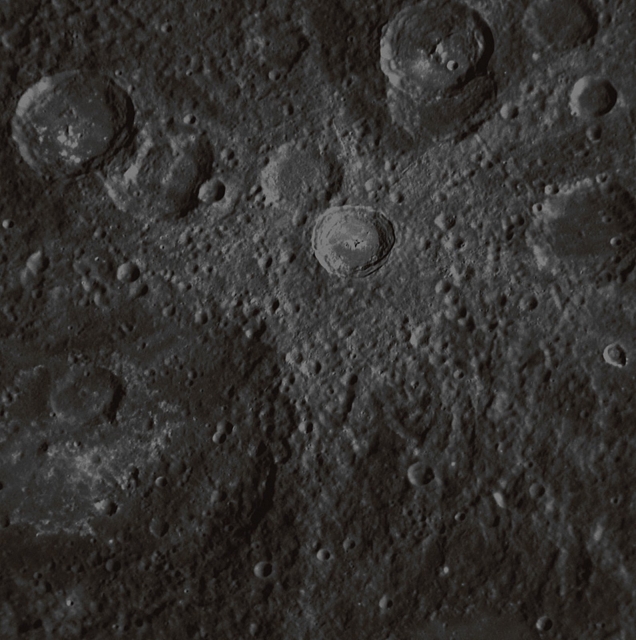
August 13, 2012
Credits: NASA/Johns Hopkins University Applied Physics Laboratory/Carnegie Institution of Washington and Dr Paolo C. Fienga/LXTT/IPF for the additional process. and color.
|
This Narrow Angle Camera (NAC) of the Mercury Dual Imaging System (MDIS) image taken from the NASA - MESSENGER Spacecraft during its 2nd (second) Fly-By of the Planet Mercury shows us an Unnamed Impact Crater with a set of light-colored Rays radiating outward from it. Such Rays are formed when, at the time of an Impact Event, a certain quantity of Material is excavated from below the Surface and then thrown away, outward from the Crater. These Bright Rays, consisting both of Ejecta (such as, mostly, Rocks, Boulders and Dust) and the Secondary Craters (which form when the Ejected Material re-impacts the Surface), have already - slowly - started to fade, as they are exposed to the harsh Space Environment. In other words, Mercury, as well as any other airless Planetary Body, is constantly being bombarded with Micrometeorites and Energetic Ions, an effect known as "Space Weathering". However, Impact Craters with Bright Rays are thought to be relatively young because the Rays are still visible, suggesting that they have had less exposure to Weathering processes. The Impact Crater located in the center of this image has also Rays that have already begun to fade, implying that it is older than some other Rayed Craters visible on Mercury’s Surface. Date Acquired: October 6, 2008 Image Mission Elapsed Time (MET): 131771863 Instrument: Narrow Angle Camera (NAC) of the Mercury Dual Imaging System (MDIS) Resolution: 240 meters/pixel (0,15 miles/pixel) Scale: this image is approximately 240 Km (about 150 miles) wide Spacecraft Altitude: about 9500 Km (approx. 5900 miles) This frame has been colorized in Absolute Natural Colors (such as the colors that a human eye would actually perceive if someone were onboard the NASA - MESSENGER Spacecraft and then looked outside, towards the Planet Mercury), by using an original technique created - and, in time, dramatically improved - by the Lunar Explorer Italia Team. |
News visualized: 616 times

